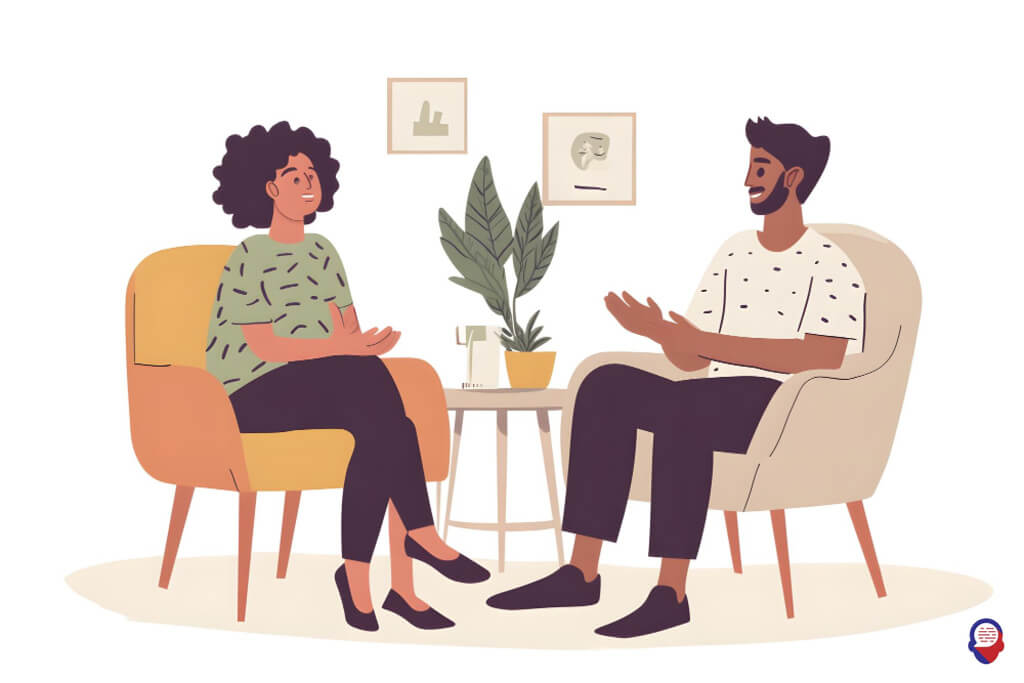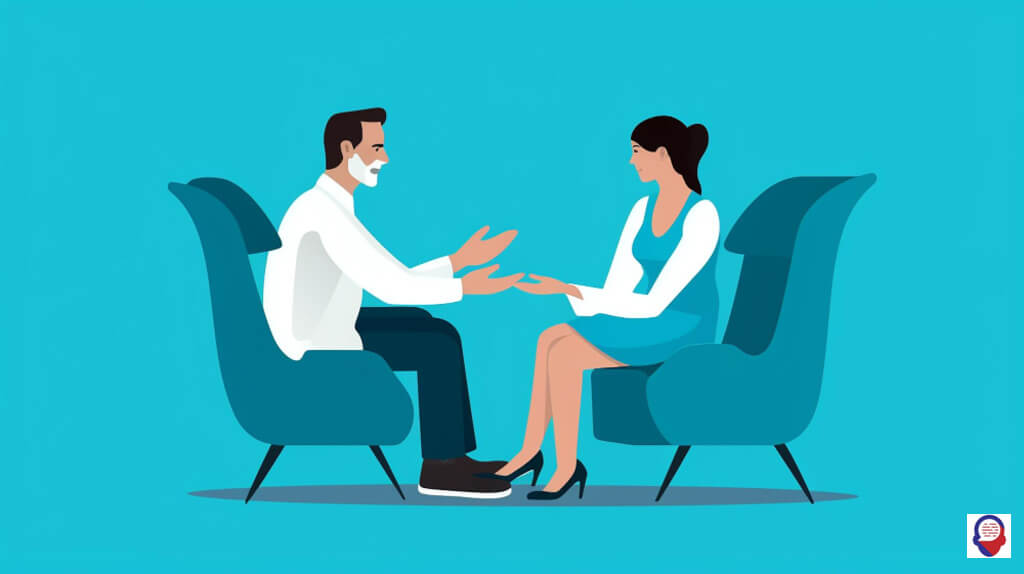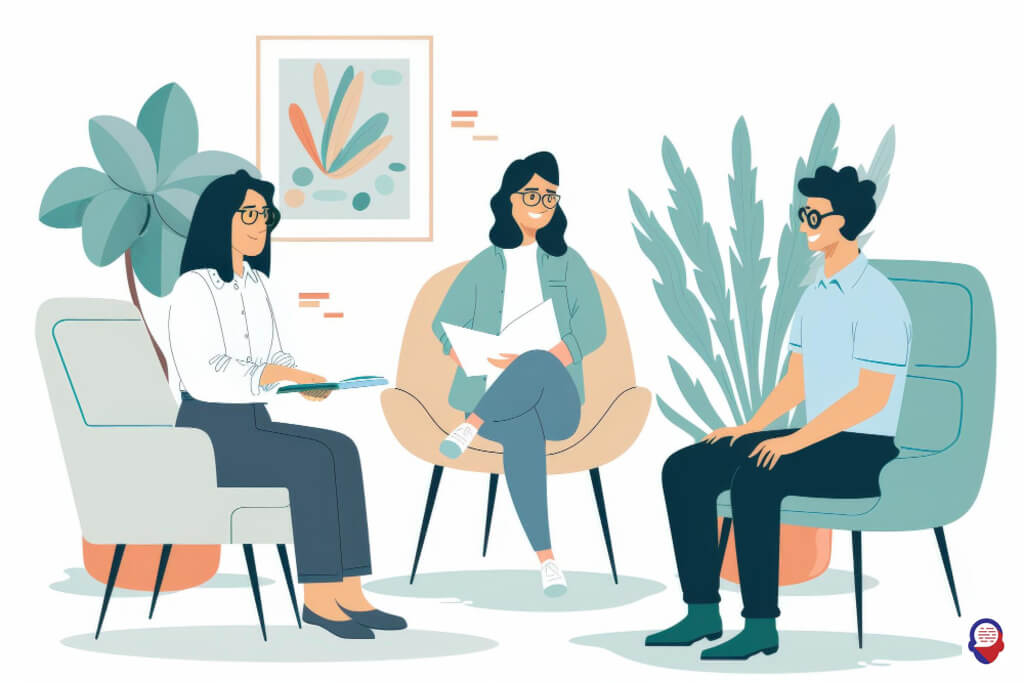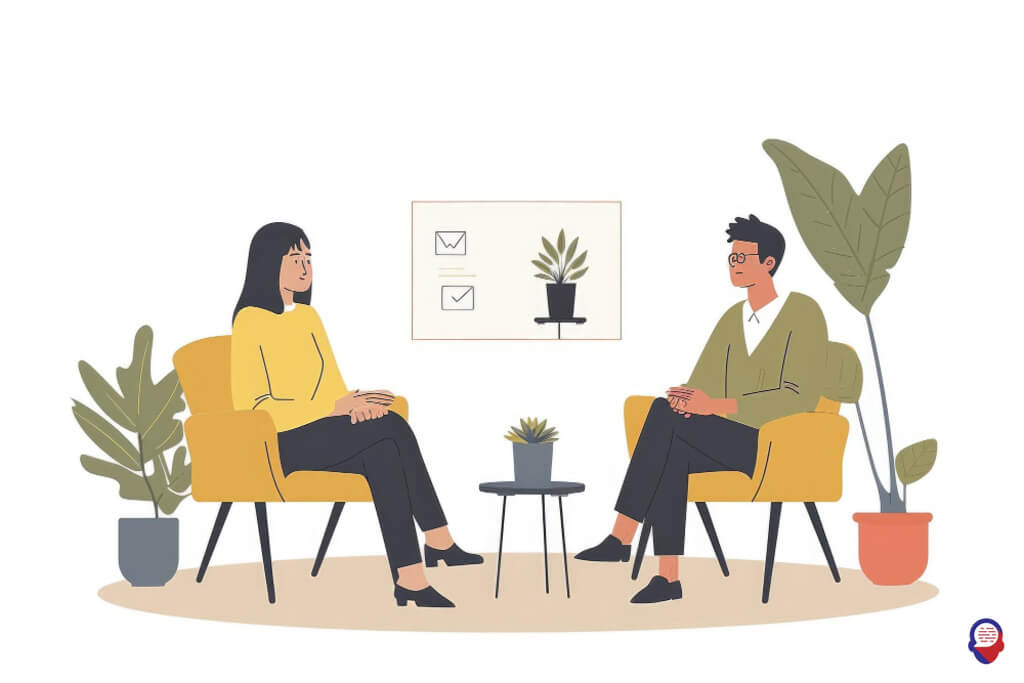Navigating IAPT: Your Guide to NHS Talking Therapies
Taking the first step towards seeking help for your mental health is a monumental act of courage. It’s a quiet, personal revolution. But once you’ve made that decision, a new landscape of questions emerges. Where do you go? Who do you talk to? How does it all work? For millions in England, the answer to these questions often involves a service known as IAPT.
This service, now officially being rebranded as ‘NHS Talking Therapies, for anxiety and depression’, represents a significant shift in how mental health care is delivered in the UK. It was born from a simple, powerful idea, that everyone who needs psychological therapy should be able to get it, free, on the NHS. This guide is here to demystify the IAPT programme, to walk you through its processes, its therapies, its triumphs, and its challenges. It’s your map to understanding one of the most accessible routes to mental health support available today.

What Exactly is IAPT?
IAPT stands for Improving Access to Psychological Therapies. It is an NHS programme in England designed to make evidence-based talking therapies widely available for adults experiencing common mental health difficulties, primarily anxiety disorders and depression.
Launched in 2008, its core mission was to address the vast number of people struggling with these conditions who were not receiving any form of specialist help. Before IAPT, accessing therapy on the NHS was often a postcode lottery, with long waits and limited options. IAPT aimed to change that by creating a structured, nationwide service.
The programme operates on a clear principle, using therapies that have been rigorously tested and approved by the National Institute for Health and Care Excellence (NICE). This ensures that the treatment you receive is not just a friendly chat, but a recognised, effective intervention for your specific problem. It’s about providing the right therapy, from a trained practitioner, at the right time.

Who is IAPT Therapy For?
This therapy service is designed for adults aged 18 and over in England who are dealing with common mental health problems. If you’re experiencing symptoms of anxiety or depression that are getting in the way of your daily life, IAPT is likely for you.
The term "common mental health problems" covers a specific range of conditions. This includes generalised anxiety disorder (GAD), panic attacks, social anxiety, obsessive-compulsive disorder (OCD), and specific phobias. It also provides support for post-traumatic stress disorder (PTSD) and various forms of depression, including pre-natal and post-natal depression.
It’s equally important to understand who IAPT may not be best suited for. The service is not typically designed for those with severe and enduring mental illnesses like psychosis or bipolar disorder, which often require more intensive, specialist psychiatric care. It is also not an emergency or crisis service. If you feel you are at immediate risk, you should contact emergency services or a crisis helpline directly.

How Does the IAPT Process Actually Work?
The IAPT process follows a structured pathway, beginning with your first contact and leading to a recommended course of treatment. This system, known as the ‘stepped care model’, is designed to ensure you get the most appropriate level of support for your needs in an efficient way.
The journey is intentionally straightforward to navigate. It starts with an initial referral, moves to a detailed assessment to understand your difficulties, and then places you into a ‘step’ of care that matches the intensity of support you require. This whole process is monitored using standard questionnaires to track your progress from start to finish.
Think of it as a guided journey. You are not left to figure things out alone. Each stage is designed to lead logically to the next, with trained professionals making decisions with you, not for you, about the best path forward for your recovery.

How do you start the IAPT process?
You can start the process in one of two main ways, through a self-referral or via your GP. The ability to self-refer is one of the cornerstones of IAPT, designed to make access as direct and easy as possible.
Self-referral means you do not need to see a doctor first. You can contact your local IAPT service directly, usually by filling out an online form on their website or by calling them. You can find your local service by searching online for "IAPT" or "NHS Talking Therapies" followed by your town or borough. This puts you in control and can often be the quickest way to get an initial assessment.
Alternatively, you can speak to your GP. They can discuss your symptoms with you and, if appropriate, make a referral to the IAPT service on your behalf. For some people, talking to a familiar family doctor first feels more comfortable, and a GP can also help rule out any physical causes for your symptoms.

What happens during the initial assessment?
The initial assessment is a conversation with a trained practitioner to understand what you’re going through and determine if IAPT is the right service for you. This is usually conducted over the phone, though video calls or face-to-face meetings can sometimes be arranged.
During this conversation, which typically lasts between 30 to 60 minutes, the practitioner will ask you questions about your current feelings, the specific problems you’re facing, and how they are impacting your life. They will be listening with empathy and without judgement. It’s a space for you to be open about your struggles.
You will also be asked to complete a couple of short questionnaires. These usually include the GAD-7, which screens for anxiety, and the PHQ-9, which screens for depression. These are not tests you can pass or fail, they are simply tools that help the service measure the severity of your symptoms and track your progress over time. Based on this whole assessment, a recommendation for the most suitable type of therapy will be made.

What is the stepped care model?
The stepped care model is the framework that IAPT uses to organise treatment. It ensures that you are offered the least intrusive, most effective treatment for your needs first, with the option to ‘step up’ to more intensive therapy if required.
Step 1 is the initial assessment phase we’ve just discussed, where your needs are evaluated. Following this, most people will be offered treatment at either Step 2 or Step 3.
Step 2 involves ‘low-intensity’ treatments. These are for people with mild to moderate depression and anxiety. They are often based on self-help principles with the support of a Psychological Wellbeing Practitioner (PWP). The goal is to give you the tools and skills to manage your own mental health effectively.
Step 3 is for ‘high-intensity’ treatments. This is for people with more moderate to severe difficulties or for those who did not find Step 2 treatment helpful. This involves regular, one-to-one therapy sessions with a qualified high-intensity therapist, such as a CBT therapist or a counsellor.

What Kinds of Therapies Are Offered Through IAPT?
The therapies offered through IAPT are specifically chosen because they have a strong evidence base and are recommended by NICE. The service focuses on practical, skills-based approaches designed to help you understand and change the patterns of thinking and behaviour that contribute to your distress.
The type of therapy you are offered will depend on your initial assessment and which ‘step’ of care is deemed most appropriate for you. Low-intensity options focus on guided learning and skill acquisition, while high-intensity options involve deeper, more structured therapeutic work with a dedicated therapist.
This targeted approach ensures that the resources of the NHS are used effectively. It also means you are getting a therapy that is proven to work for the specific problem you are facing, whether that is panic, low mood, or obsessive thoughts.

What are low-intensity treatments?
Low-intensity treatments, or ‘Step 2’ interventions, are effective, brief therapies for mild to moderate anxiety and depression. They are delivered by trained Psychological Wellbeing Practitioners (PWPs) and focus on teaching you practical coping strategies.
One of the most common forms is Guided Self-Help. Here, your PWP will provide you with high-quality self-help materials, often based on Cognitive Behavioural Therapy (CBT) principles. You will then have regular, short support sessions, perhaps over the phone or online, where your PWP guides you through the material and helps you apply the techniques to your life.
Other low-intensity options include psychoeducational groups or workshops, where you learn about your condition alongside others experiencing similar difficulties. There is also Computerised CBT (cCBT), which is an online therapy programme you can work through at your own pace, with occasional check-ins from a practitioner. These methods empower you with skills for life, not just for the duration of the treatment.

What are high-intensity treatments?
High-intensity treatments, or ‘Step 3’ interventions, involve more in-depth, one-to-one talking therapy with a qualified therapist. These are offered to individuals with more severe or persistent conditions, or for those who need more support than low-intensity options can provide.
The most common high-intensity therapy within IAPT is Cognitive Behavioural Therapy (CBT). This is a structured therapy that helps you identify and challenge unhelpful cycles of thoughts, feelings, and behaviours. A typical course of CBT involves weekly sessions over several months, focusing on practical skills to manage your specific problems.
Another key therapy offered is Counselling for Depression (CfD). This is a form of person-centred therapy specifically adapted for depression, helping you explore and process underlying feelings. For specific issues like PTSD, IAPT may offer Eye Movement Desensitization and Reprocessing (EMDR), and for relationship-based depression, Interpersonal Therapy (IPT) might be available.

What Are the Benefits of Using IAPT?
The IAPT programme has several significant benefits that have made it a cornerstone of mental health provision in England. Its creation has fundamentally changed the landscape of psychological support, moving it from a niche service to a mainstream part of the NHS.
The most profound benefits are its accessibility, its commitment to evidence-based practice, and the fact that it is free to use. These three pillars work together to lower the barriers that have historically prevented people from getting the help they deserve. It represents a national commitment to treating mental health with the same seriousness as physical health.
For the individual, this means having a clear, recognised, and reliable pathway to professional support. It removes the guesswork and the financial worry, allowing you to focus on what truly matters, your recovery and wellbeing.

Is IAPT therapy free?
Yes, absolutely. As an NHS service, all assessment and treatment provided through IAPT is completely free at the point of delivery. You will not be asked to pay for your sessions.
This is arguably the most important benefit of the programme. Financial cost is one of the biggest barriers to accessing therapy, and IAPT removes this obstacle entirely. It ensures that your ability to get help for your mental health is not dependent on your ability to pay.
This principle of free access is fundamental to the NHS and is central to the IAPT mission. It democratises mental health care, making proven psychological therapies available to everyone, regardless of their income or background.

Is the treatment evidence-based?
Yes, the treatment is robustly evidence-based. IAPT services exclusively use psychological therapies that have been reviewed and recommended by the National Institute for Health and Care Excellence (NICE).
NICE is the organisation that provides national guidance and advice to improve health and social care in the UK. They conduct thorough reviews of scientific evidence to determine which treatments are most effective for specific conditions. By adhering strictly to these guidelines, IAPT ensures that patients receive therapies with a proven track record of success.
This means you can have confidence in the treatment you are offered. It is not an experimental or unproven approach. It is a therapy that has been shown, through extensive research, to be effective for people experiencing the same difficulties as you.

How does IAPT improve accessibility?
IAPT improves accessibility in several crucial ways, primarily through its self-referral system and flexible delivery methods. These features are designed to make the service as easy to engage with as possible.
The self-referral option is a game-changer. By allowing you to contact the service directly without needing to see a GP first, it removes a significant barrier. This empowers you to take control of your mental health journey and can significantly speed up the process of getting help.
Furthermore, IAPT services offer therapy in various formats to fit around your life. While face-to-face sessions are available, many services also provide support over the phone, via video call, or through online platforms. This flexibility makes it easier for people with mobility issues, childcare responsibilities, or demanding work schedules to access and attend their therapy sessions.

What Are the Potential Challenges or Criticisms of IAPT?
While the IAPT programme has been revolutionary, it is not without its challenges and criticisms. A balanced understanding requires acknowledging the areas where the service can fall short, as these are real experiences for many users.
The main criticisms often revolve around waiting times, the perceived ‘one-size-fits-all’ nature of the treatments, and the limited number of sessions offered. These issues stem largely from the immense demand placed on a public service that has to manage its resources carefully to help as many people as possible.
Understanding these potential drawbacks is not about discouraging you from using the service. Instead, it’s about setting realistic expectations. It helps you to be an informed and empowered user of the service, aware of both its strengths and its limitations.

Are there long waiting lists?
Yes, in many parts of the country, waiting lists for IAPT services can be long. This is one of the most significant and widely reported challenges of the programme.
Waiting times vary dramatically depending on your geographical location and the type of therapy you need. The wait for an initial assessment might be relatively short, often just a few weeks. However, the wait to start the actual therapy, particularly high-intensity therapy, can stretch to several months or even longer in areas with high demand.
The NHS has targets for waiting times, but the sheer volume of people seeking support means these are not always met. This waiting period can be incredibly difficult and frustrating when you are struggling and have taken the brave step to ask for help.

Is the ‘one-size-fits-all’ approach a problem?
Some people find that the structured and protocol-driven approach of IAPT feels too rigid. Critics argue that its focus on specific, measurable symptoms of anxiety and depression can sometimes miss the more complex, nuanced, or underlying issues a person might be facing.
Because IAPT uses manualised, NICE-approved therapies like CBT, the treatment can sometimes feel less tailored to the individual and more like a set formula. For those whose problems don’t fit neatly into a diagnostic box, or for those who wish to explore deeper existential or relational issues, this model may feel limiting.
This doesn’t mean the therapy is ineffective, it is highly effective for its target conditions. However, it does mean it may not be the right fit for every single person or every single problem. It’s a system designed for the majority, which can sometimes leave those with less common or more complex needs feeling underserved.

Why is the number of sessions sometimes limited?
IAPT services typically offer a fixed, short-term course of therapy. This is because it operates as a high-volume service designed to help a large number of people with finite resources.
For low-intensity treatments, you might have around 6 to 8 short support sessions. For high-intensity therapy like CBT, you might be offered anywhere from 8 to 20 weekly sessions, with the average being closer to 12. This is based on evidence showing that significant improvements can be made within this timeframe for common problems.
However, for individuals with long-standing or more deeply entrenched difficulties, this brief model may not feel like enough time to fully address their issues. The therapy can feel like it’s ending just as you are starting to make real progress, which can be a source of frustration for some service users.

How Can You Make the Most of Your IAPT Experience?
To get the most out of your therapy, it is vital to be an active and engaged participant in your own recovery. Therapy is not something that is ‘done’ to you, it is a collaborative process that requires your input and effort.
Your therapist is an expert guide, but you are the expert on yourself. The most successful outcomes happen when you work together as a team. This means being open, honest, and willing to try new ways of thinking and behaving, both inside and outside of your sessions.
Approach the experience with realistic expectations and a commitment to the process. Remember that change takes time and effort, but with the right support and your active involvement, real and lasting improvement is entirely possible. Be prepared to work between sessions, be honest about your struggles, and communicate openly with your practitioner.
Frequently Asked Questions

Is my IAPT therapy confidential?
Yes, your therapy is confidential. Your IAPT practitioner is bound by professional codes of conduct, just like your GP. What you discuss in your sessions will be kept private and will not be shared with others, such as your family or employer, without your explicit consent. The only exception is if they have a serious concern that you or someone else is at risk of significant harm, in which case they have a duty of care to take steps to ensure safety, which may involve breaking confidentiality. This would always be discussed with you first wherever possible.

Can I choose my therapist?
Generally, no, you cannot choose your specific therapist within an IAPT service. You will be allocated to a practitioner, either a PWP for low-intensity treatment or a high-intensity therapist, based on their availability and the service’s rota system. While you can’t choose the person, you can be assured that all practitioners are trained to a nationally recognised standard and are supervised to ensure they provide high-quality care.

What if IAPT isn’t right for me?
If you feel that IAPT is not the right service for you, either during the assessment or part-way through treatment, it is important to discuss this. You can talk to your IAPT practitioner or your GP about your concerns. They can help you explore other avenues of support, which might include different NHS mental health teams, charity sector services, or considering private therapy if that is an option for you. It is okay to recognise that a particular service or therapy model isn’t the best fit.

How is IAPT different from private therapy?
The main differences are cost, waiting times, and choice. IAPT is free, while private therapy requires payment. Waiting times for IAPT can be long, whereas you can often see a private therapist very quickly. In private practice, you have complete freedom to choose your therapist and the type of therapy you want, allowing you to find someone who specialises in your specific issues and whose approach resonates with you. Private therapy can also offer more flexibility in the number of sessions and the depth of exploration, which can be beneficial for more complex or long-term problems.

***
At Counselling-uk, we understand that navigating life’s challenges can be overwhelming. While NHS services like IAPT are a vital resource, we know that waiting lists can be long and that a structured, short-term approach isn’t the right fit for everyone. We believe you deserve support when you need it most.
We are here to offer a safe, confidential, and professional place to find the help you need, without the wait. Our qualified therapists provide support for all of life’s challenges, big and small, tailoring their approach to your unique needs. If you’re looking for a space to be heard and understood, take the next step with us today. Your wellbeing is our priority.






The type of treatment offered will depend on each person’s individual needs and circumstances. Treatment usually involves one-to-one sessions with a therapist who will work with the person to identify their goals for therapy and then develop an individualised plan to achieve these goals. This could include cognitive behavioural therapy (CBT), counselling, psychotherapy, or other forms of psychological treatment.
Attending an IAPT (Improving Access to Psychological Therapies) session can be a daunting experience for many. However, it’s important to understand what to expect before the day of your appointment. This article outlines the key aspects of an IAPT session, from the type of therapy you will receive, the type of questions you may be asked and how long each session typically lasts.
Type Of Therapy